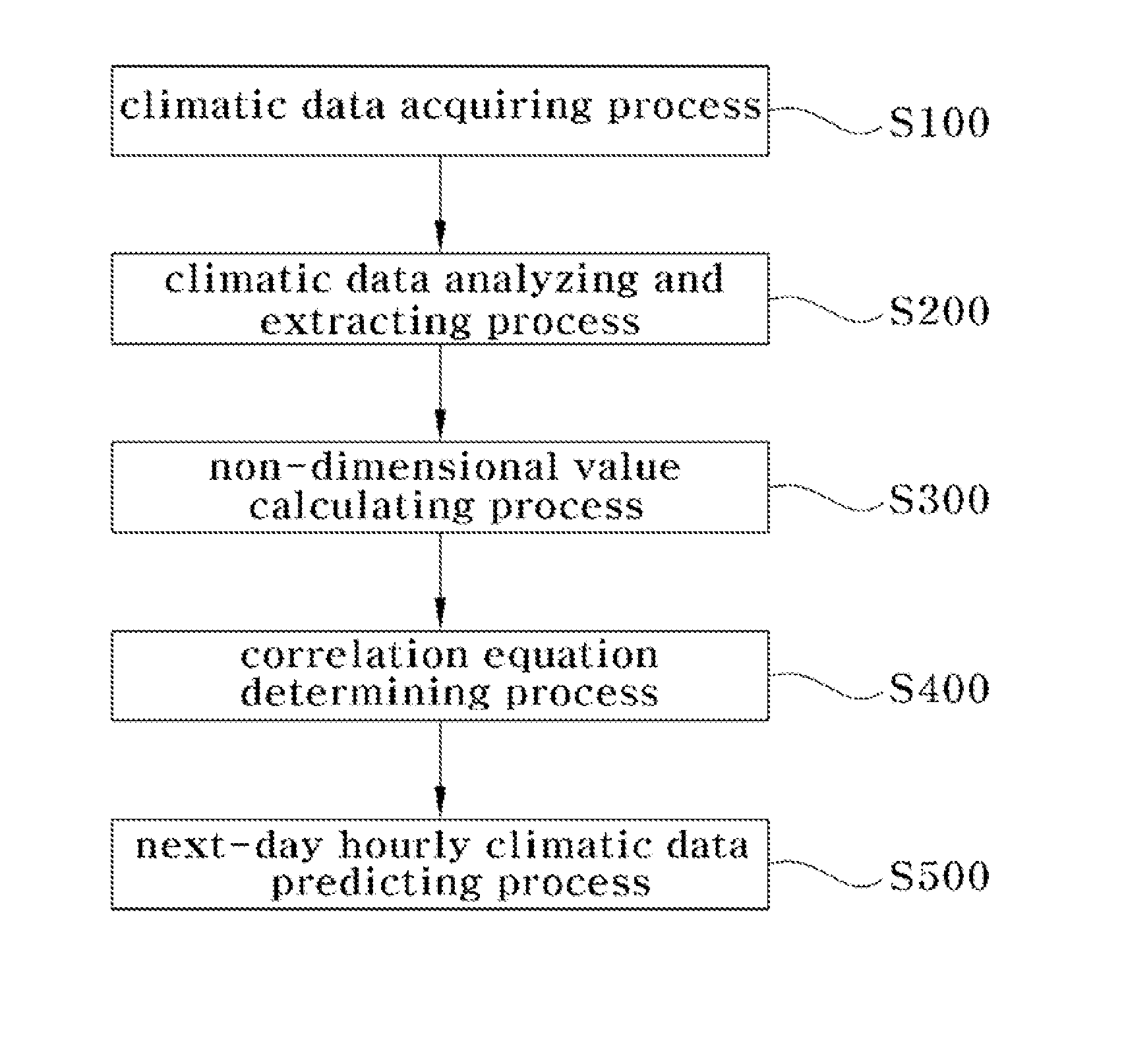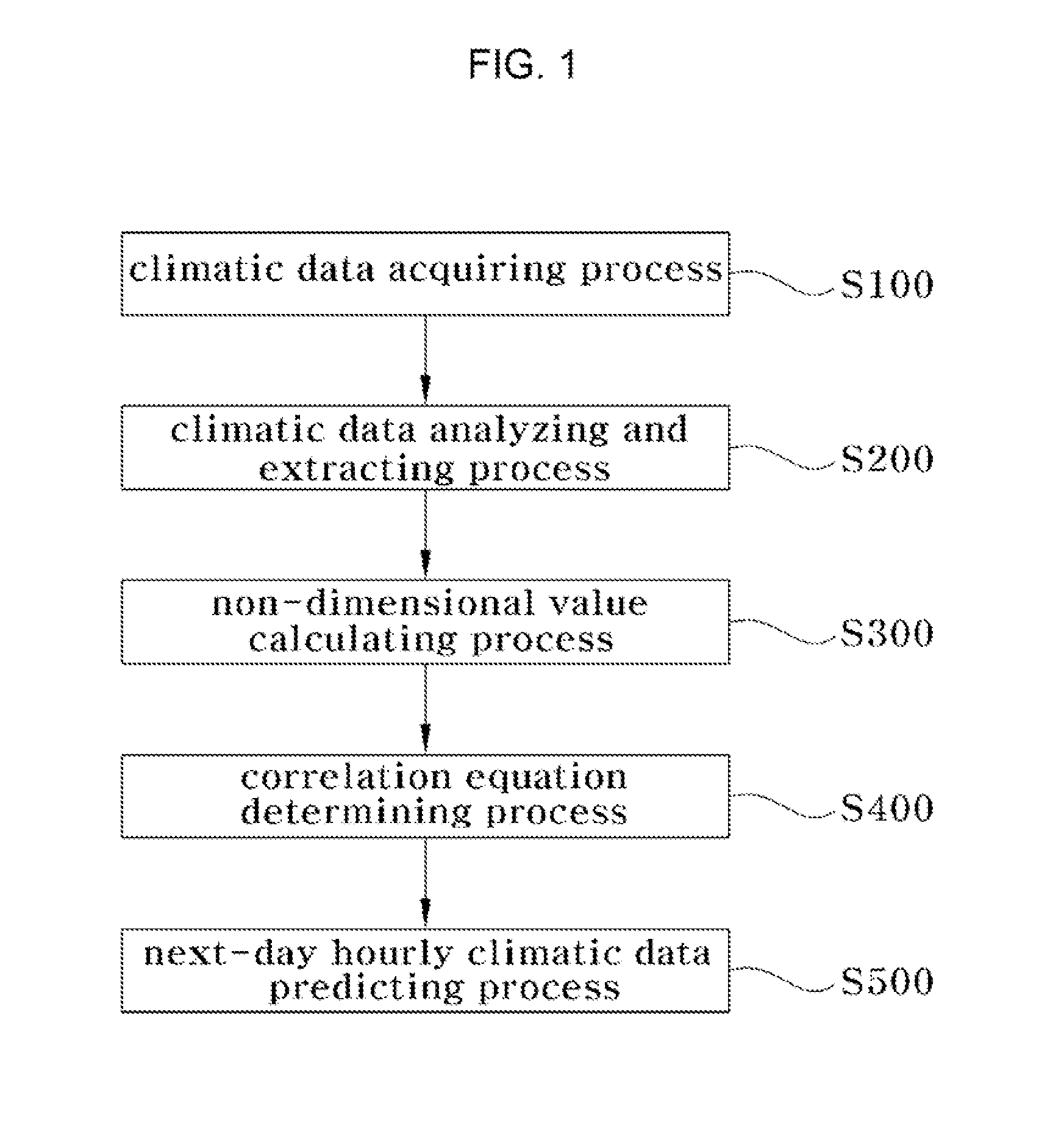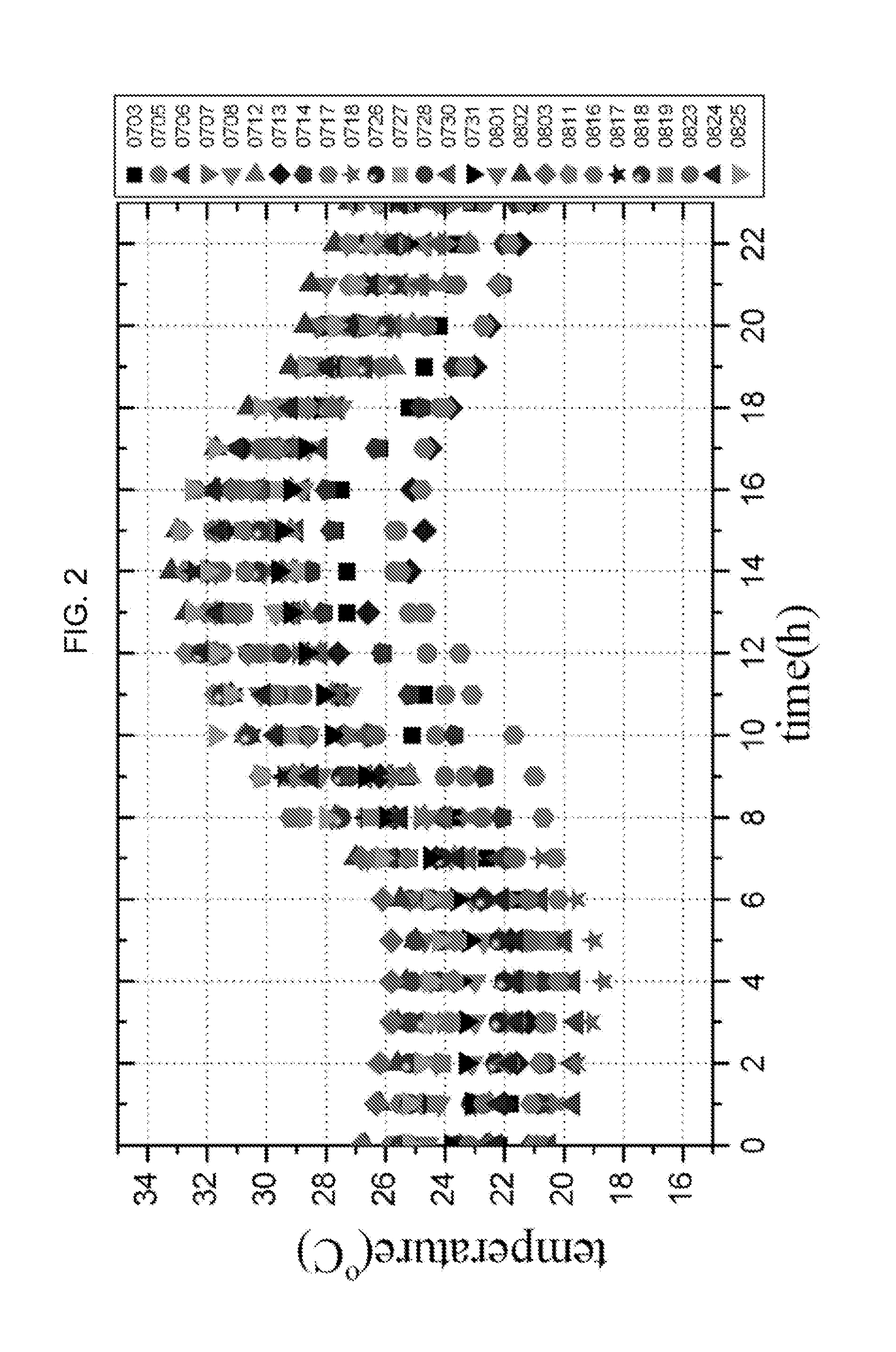Method for predicting hourly climatic data to estimate cooling/heating load
a climatic data and hourly technology, applied in the field of hourly climatic data prediction to estimate cooling/heating load, can solve the problems of reducing the accuracy of relative humidity prediction, and affecting the accuracy of climatic data prediction. accurate and rational prediction of hourly climatic data, accurate estimation of next-day cooling/heating load
- Summary
- Abstract
- Description
- Claims
- Application Information
AI Technical Summary
Benefits of technology
Problems solved by technology
Method used
Image
Examples
Embodiment Construction
[0028]Hereinafter, exemplary embodiments of the present invention will be described in detail.
[0029]The present invention relates to a method for predicting hourly climatic data to estimate a cooling / heating load, which may precisely predict a next-day cooling / heating load by using only climatic data provided from the Meteorological Office without using real measured values. To this end, as illustrated in FIG. 1, the present invention includes a climatic data acquiring process S100, a climatic data analyzing and extracting process S200, a non-dimensional value calculating process S300, a correlation equation determining process S400 and a next-day hourly climatic data predicting process S500.
[0030](1) The Climatic Data Acquiring Process S100
[0031]In this process, basic climatic data necessary to calculate the cooling / heating load is downloaded from the Meteorological Office via internet and stored in the memory of a controller(or a computer) of an automatic control system for a buil...
PUM
 Login to View More
Login to View More Abstract
Description
Claims
Application Information
 Login to View More
Login to View More - R&D
- Intellectual Property
- Life Sciences
- Materials
- Tech Scout
- Unparalleled Data Quality
- Higher Quality Content
- 60% Fewer Hallucinations
Browse by: Latest US Patents, China's latest patents, Technical Efficacy Thesaurus, Application Domain, Technology Topic, Popular Technical Reports.
© 2025 PatSnap. All rights reserved.Legal|Privacy policy|Modern Slavery Act Transparency Statement|Sitemap|About US| Contact US: help@patsnap.com



